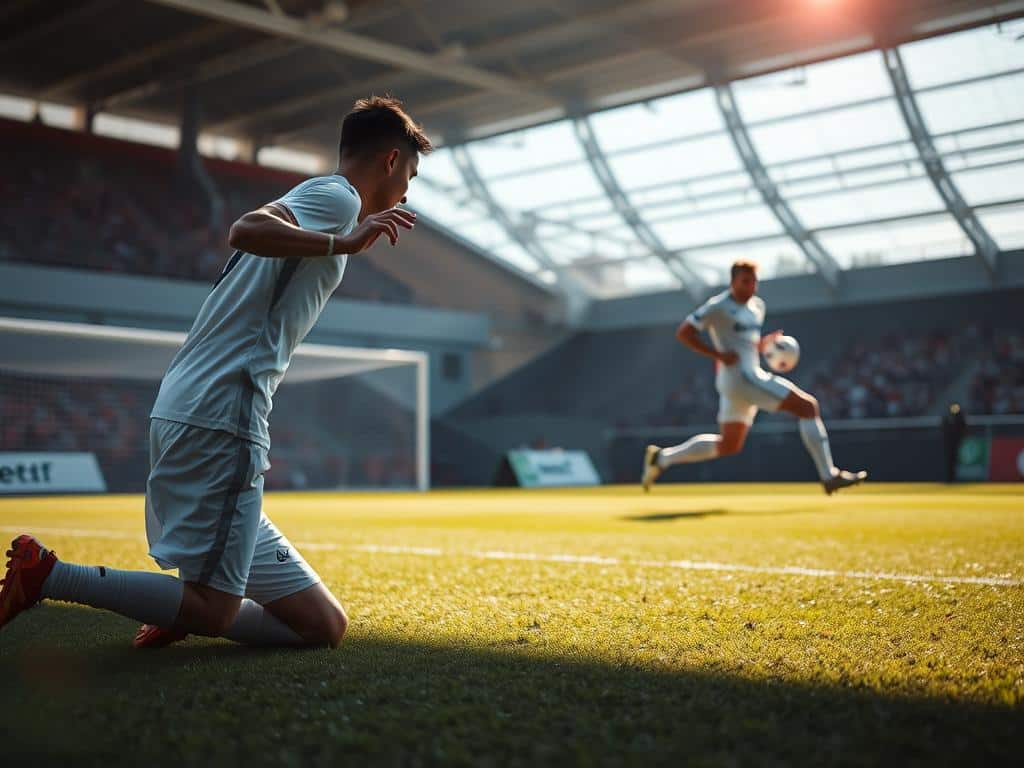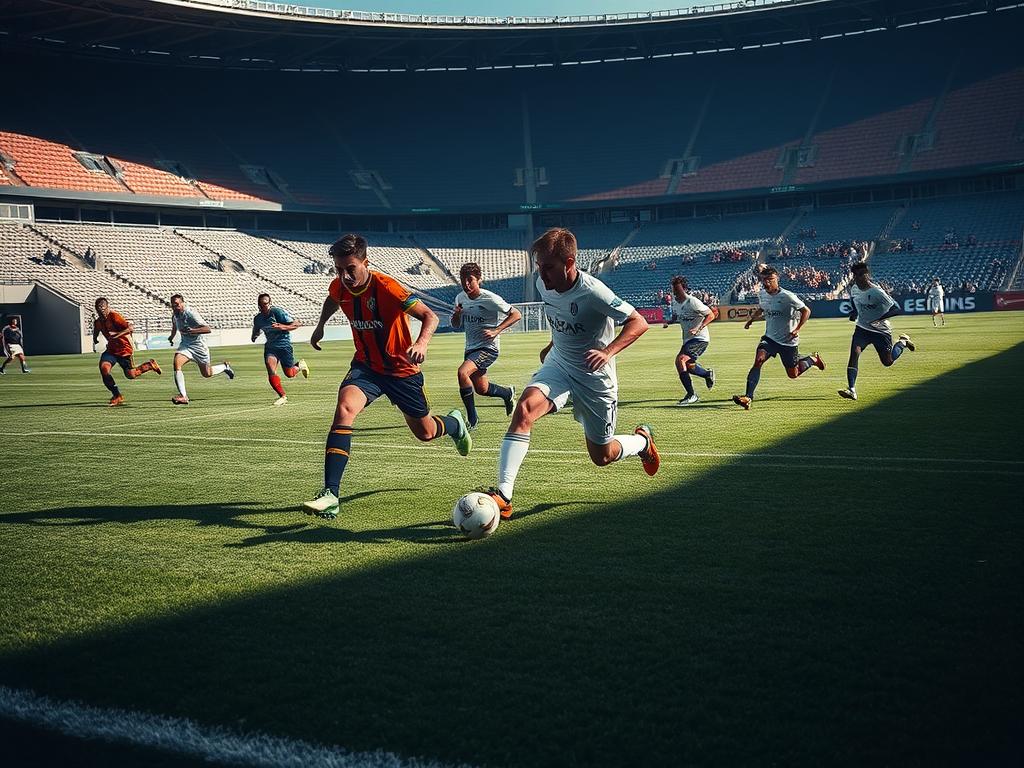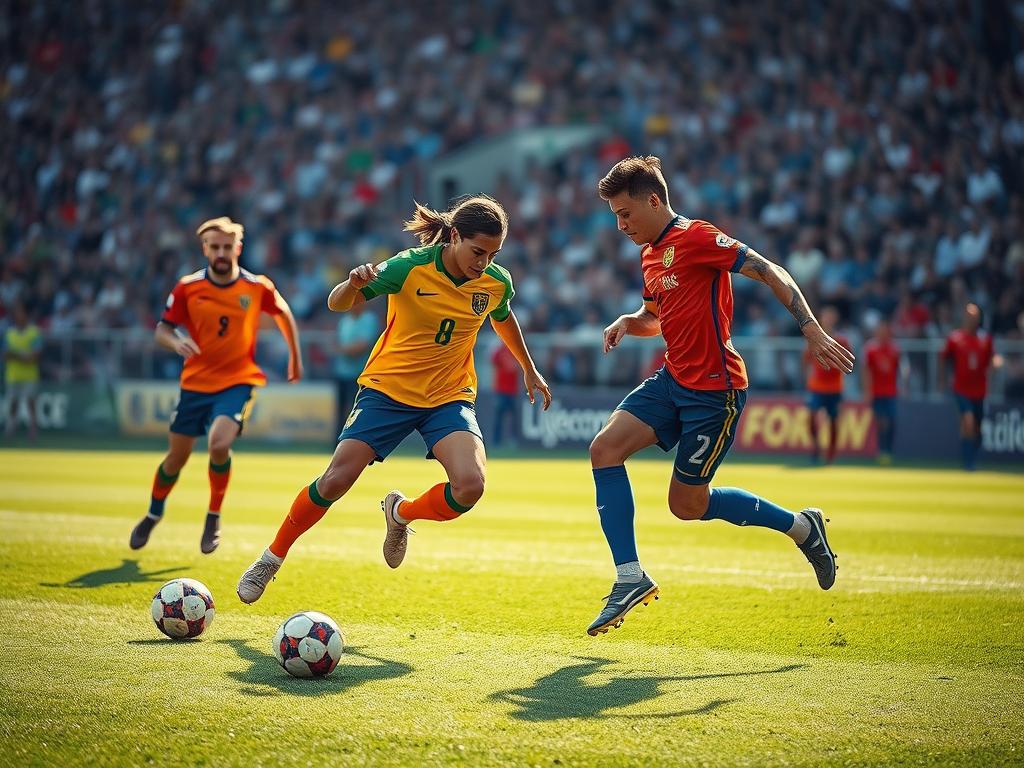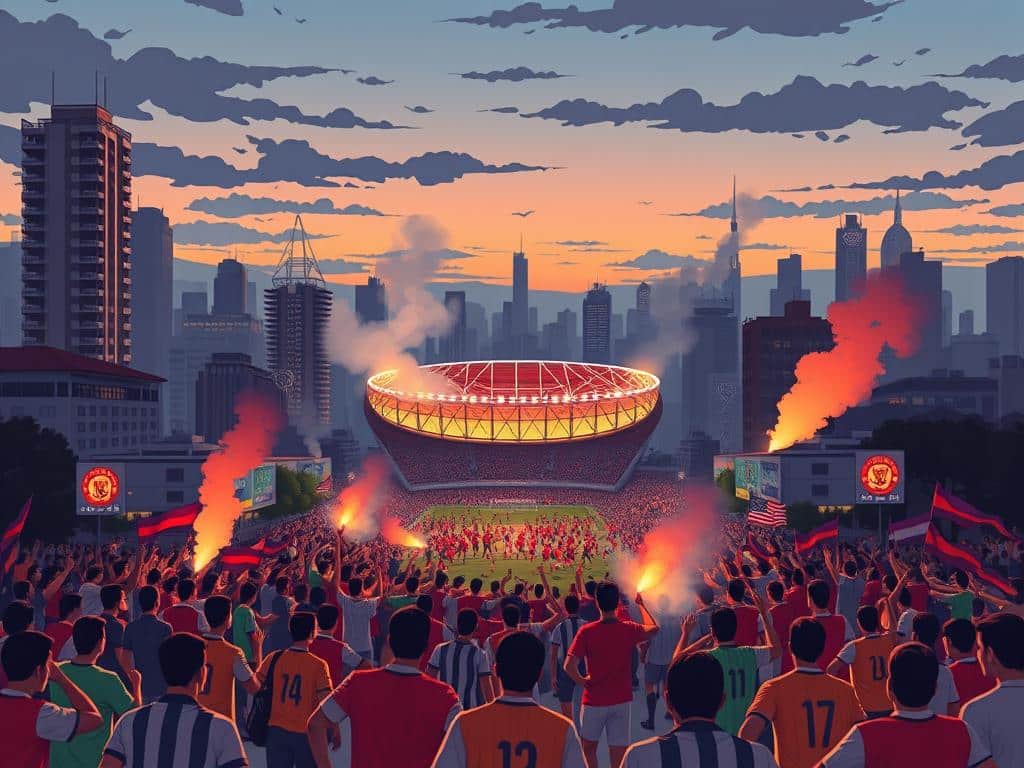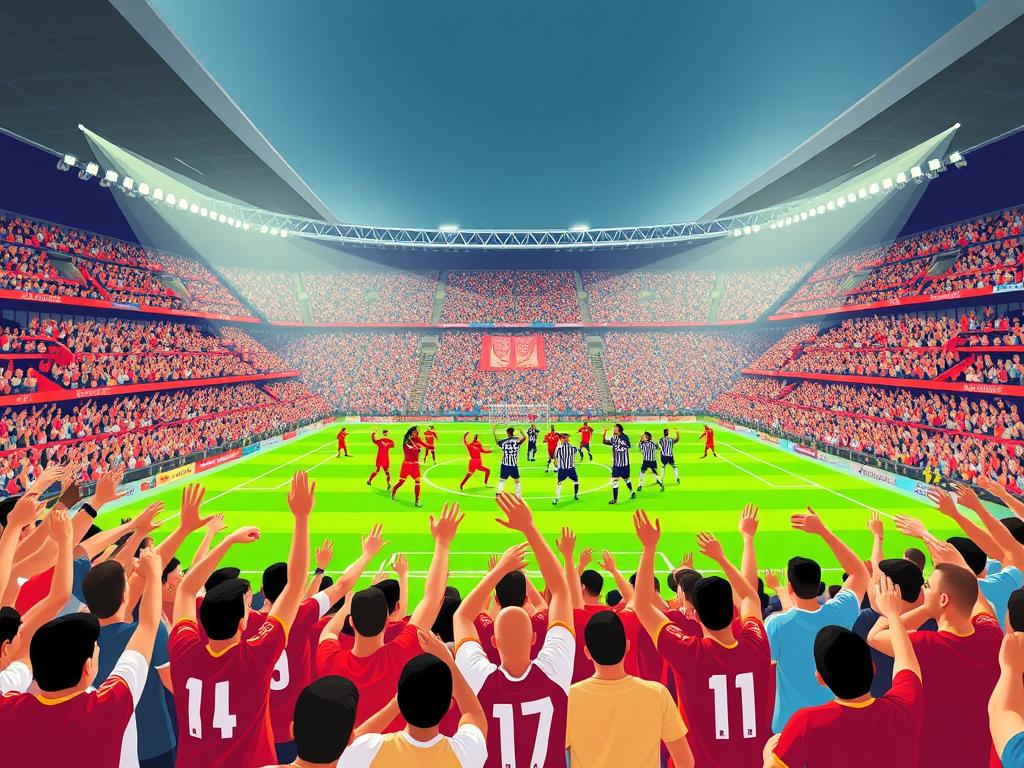You want clear, proven ways to slow a rapid opponent without fouling; use the guide “how to defend against fast wingers” as your playbook. Expect practical steps that link what you see on the pitch with specific footwork, body shape, and timing so you control the duel and protect the goal.
Simple cues and position tweaks buy yards and cut the attacker’s options. Learn an anticipation routine that gives you a head start before the ball is played and team coordination rules that keep you from getting isolated 1v1.
We’ll offer field-tested drills for first steps, recovery runs, and reads you can use under match pressure. The goal is a repeatable way to approach every wide threat with calm and a plan you trust.
Key Takeaways
- Read the attacker’s body and start your anticipation early.
- Use positioning tweaks to buy space without committing fouls.
- Coordinate with your back line and midfield to limit isolation.
- Practice first-step drills and recovery runs under pressure.
- Apply simple decision rules that halve the opponent’s options.
Understanding the challenge today: pace, space, and decision speed
Modern wide threats win duels by timing runs into the area behind defenders, not just by sprinting past them. That combo—top-end pace plus the gap they attack—creates split-second problems for you and your teammates.
What hurts first is acceleration over the first three steps and the separation that follows when you rebalance. Great attackers read hips. If you square up too long or open the wrong way, they exploit the lane you leave.
The fix starts before the dribble: set your body angle to remove dangerous space and force play where help can arrive. In soccer, defense stays a team task, yet your first step, first touch, and scan rate often decide the outcome.
- Ask quick baseline questions: Where is cover? Where is the biggest space? Which foot does the winger prefer?
- Build decision speed in training with short rest, repeated sprints, and rapid directional calls.
Want evidence that reaction matters? Read about reaction time and its impact on match moments at reaction time.
Reading the game faster than the attacker
Anticipation wins duels: spot the passer’s cues and steal a head start. Small reads and quick reactions let you arrive first, even when the opponent has superior pace.
Head-up cues: when a midfielder looks down
Watch the midfielder’s head. When they drop it, the over-the-top ball is likely coming. That single cue is a cheat code for timing your run and closing space before the ball lands.

Anticipation windows: earn one to two seconds
Use the 10-repeat indoor drill: setter sits ~30 yards and looks down before playing the ball. On the cue, sprint ~20 yards, return, and repeat ten times.
Coaching points: stay goal-side, keep arm’s-length contact, read the head-down cue, and use a subtle legal push-off when turning.
Mental speed training for players under real game pressure
Mental speed is trainable. Call short cues like “drop” and “step” during reps so players make split-second choices under stress.
- Scan twice before the touch.
- Keep weight on the balls of your feet.
- Focus on angle and arrival, not a foot race.
Result: you arrive first more often, clear danger, or force the attacker wide. Simple techniques and steady training change outcomes.
Positioning fundamentals that slow a winger without fouling
Position wins scraps: stand where the goal is always in your line of sight and force the attacker into tight choices. Small angles and steady feet buy you reaction time more than raw sprint speed ever will.
Start goal-side and protect the path to the net. That simple spot places you between danger and cover, and it gives your teammates time to read the play.
Stay goal-side and protect the path to goal
First rule for any player under pressure: stay goal-side and angle your stance so the path to the net is closed before the duel starts. If you get turned often, you’re too tight—create a cushion and read the winger’s hips.
Arm’s-length contact: use your arms legally to feel the attacker
Keep an arm’s-length buffer with light forearm contact. Use your arms legally—steady, subtle, and within your frame—to sense shifts without inviting a spin move on your back.
- Your hips should point slightly toward the safe side for easier shuffles and recovery.
- Don’t overcommit to the first fake; delay and guide, then pounce when the touch opens.
- Once forced near the sideline, match stride, show patience, and wait for the heavy touch that opens the tackle.
- Strong positioning shrinks the channel, slows play, and invites cover to arrive—smart defense beats sprinting contests.
how to defend against fast wingers on the touchline and inside channels
Choose the lesser-dangerous lane and your stance becomes obvious: touchline or inside channel, which risks fewer shots? Answer that based on your cover and the picture in front of you.
Show outside vs show inside: if your defensive midfielder (the 6) is set and a center back is tight, you as a fullback or right back can show outside and squeeze the cross angle. That choice buys your team time and narrows the attacker’s options.
If the box looks underloaded and the cutback is the real threat, show outside more aggressively to block dribbles into central shooting lanes. When the winger loves a dominant foot, angle your body to force the weaker option, then pounce when the touch stretches.
On the touchline, ride the duel: delay, mirror, and time your poke when the ball is exposed. Inside the channel, call for cover early and slow the tempo so teammates can slide and win the second ball.
- Use clear communication: a quick “cover” or “inside” lets you commit boldly.
- Track supporting runs—disrupt the next pass and stop the third-man run.
- Stay adaptable: a shifting cover can flip your show-side in seconds.
| Scenario | Show Outside | Show Inside |
|---|---|---|
| 6 set & CB tight | Yes — squeeze cross angle | No — risks central space |
| Box underloaded | Yes — block cutbacks | No — invites shots |
| Winger favors dominant foot | Force weak foot | Risky unless cover arrives |
Soccer defense techniques and drills to turn speed into your advantage
Practice beats panic: use short, repeatable exercises that sharpen your first step and recovery. These drills teach you to read cues, explode early, and finish with a controlled stop so the next play is yours.
Solo over-the-top anticipation drill with start cone and repeats
Set a start cone and imagine a midfielder 30 yards away playing a ball over the top. When their head drops, sprint ~20 yards into the expected landing area, jog back, and repeat 10 times.
Coaching cues: stay goal-side, keep arm’s-length contact, anticipate 1–2 seconds early, and use a subtle push-off on your turn. If you get turned often, create a cushion.
Partner chase-and-channel exercise for fullbacks and wingers
One player touches toward the line. The defender mirrors at arm’s length. On the “play” call, the defender sprints to win the lane. Add a moving passer so defenders read both server body and attacker first step.
Small-group transition drill: right back, center back, and midfielder cover
Right back delays. Center back covers depth. Midfielder tracks the inside lane. Rotate roles so each player feels every perspective.
- Use narrow grids and timed calls to force choices under fatigue.
- Track reps and times: focus on consistent first-step intensity and clean deceleration.
- Layer progressions: weaker-foot finishing, angled runs, then lofted versus driven balls over the top.
- Finish each rep with a recovery sprint and a quick re-scan.
| Drill | Primary focus | Reps / times |
|---|---|---|
| Solo over-the-top | Anticipation & first step | 10 reps, sprint 20 yards |
| Partner chase-and-channel | Body shape & lane control | 6–8 reps each role |
| Small-group transition | Cover rotation & recovery | 5 sequences, rotate roles |
Team roles and coaching: right back, fullback, and midfielder coordination
When every player knows a single trigger, confusion on the flank disappears. That simple clarity gives your team a shared clock for decisions and fewer frantic recoveries.
Communication triggers: lock in three words — “drop” for depth, “cover” for inside protection, and “step” when support is set and the touch is heavy. Use those calls fast and loud so noise never breaks the plan.

Coach’s checklist: explain the why behind each choice
- Coach: teach the reason, not only the move. Players adapt faster when they know the aim.
- Right back: delay and guide the duel; your angle tells the midfielder where to guard.
- Fullback & center back: stagger roles — one pressures, one covers depth.
- Midfielder: seal the inside lane early, track cutbacks, and call the show-side.
- Group habit: rehearse three-player rotations (wide back, CB, and 6/8) until the handoff is automatic.
- Teams: standardize words and hand signals so crowd noise can’t break structure.
| Role | Primary task | Key trigger |
|---|---|---|
| Right back | Delay duel, guide wide | “step” |
| Center back | Provide depth cover | “drop” |
| Midfielder | Shield inside, track cutback | “cover” |
Review clips with positive specificity. Praise early cues, tight distances, and the moment a step wins a duel. Good coaching builds habits that win soccer moments.
Conclusion
This closing note packs practical habits that make speed less scary on the flank.
You now have a clear way: read earlier, angle smarter, and move first on the passer’s cue. Stay goal-side, keep arm-length contact, and guide play into safer space.
Mental speed work and targeted soccer drills build consistency. Practice under fatigue and use small exercises that mimic match rhythm.
Bring your team with you. Align the right back, fullback, center back, and midfielder with crisp calls so cover is automatic.
Coaches: close the loop with film and field reps. Keep refining first-step timing, recovery angles, and ball-side positioning, and the winger will feel the squeeze.

